What Is Performance SMS and How It Turns Texting Into Profit
What is performance SMS? Find the answer, plus all about how it turns texting into profit and what makes TextUs the right platform to do so.
Published
November 14, 2025

Your customers are already on their phones, but are your SMS marketing campaigns making an impact?
Many businesses send messages that never get read or fail to spark a response. Some don’t know if their messages even reached the customer.
Performance SMS platforms can turn basic texting into a trackable, measurable communication system that helps you see what’s happening behind every message.
In this article, we’ll explain how performance SMS works, and why it’s changing how you engage with customers. By the end, you’ll see why texting isn’t just a communication tool but also a performance channel that can drive real growth for your business.
Performance SMS vs Traditional SMS Marketing
Many legacy systems for SMS marketing only report basic delivery data, such as how many messages were successfully delivered.
However, they only provide limited insight into conversions or engagement. In some cases, issues like an invalid number or a failed send might go unnoticed. This can reduce campaign returns without your knowledge.
Modern performance SMS platforms record every part of the SMS communications process.
You can monitor the delivery rate, check the delivery status, and identify causes such as network failure. You can also see SMS opt-outs, which reveal how many recipients chose to stop receiving messages.
In summary, the main difference comes down to purpose. Traditional SMS is about message delivery. Performance SMS is about measurable outcomes.
When you track metrics, reduce spam filters, and use real-time analysis, you can promote smarter, compliant campaigns that show results.
Most importantly, texting is now a revenue channel. Other than being used for updates or reminders, it drives repeat purchases and customer retention.
When you manage it with a data-driven mindset, it becomes a direct source of profit.
Book a demo with TextUs to boost your campaign and make every text count!
SMS Performance Metrics to Measure Success
When you run performance text campaigns, the only way to know if your efforts are working is by tracking results. SMS metrics show how your messages are performing so you can adjust for better outcomes in the future.
Click-Through Rate
The CTR shows how many people tapped a link or call-to-action in your message. It’s calculated by dividing unique clicks by the total number of messages sent, then multiplying by 100 for a percentage.
A solid click rate tells you that your message content caught attention and motivated action. If it’s low, your text may need clearer wording or stronger incentives.
This figure regularly helps you analyze which campaigns drive customer engagement and which need refinement.
Conversion Rate
Your conversion rate shows how many recipients completed the desired action after clicking, such as buying, signing up, or replying. It connects message performance to business results.
For example, if 10 out of 100 recipients made a purchase, your conversion rate is 10%. Reviewing this number helps you develop stronger offers, promote better customer flow, and save time by focusing on what drives sales.
Delivery Rate and Open Rate
The delivery rate tells you how many texts were successfully delivered compared to how many you tried to send. If it’s low, you may have invalid numbers, network failure, or spam filters blocking delivery.
You have to address these issues early to increase SMS deliverability and make sure your messages reach your audience every time.
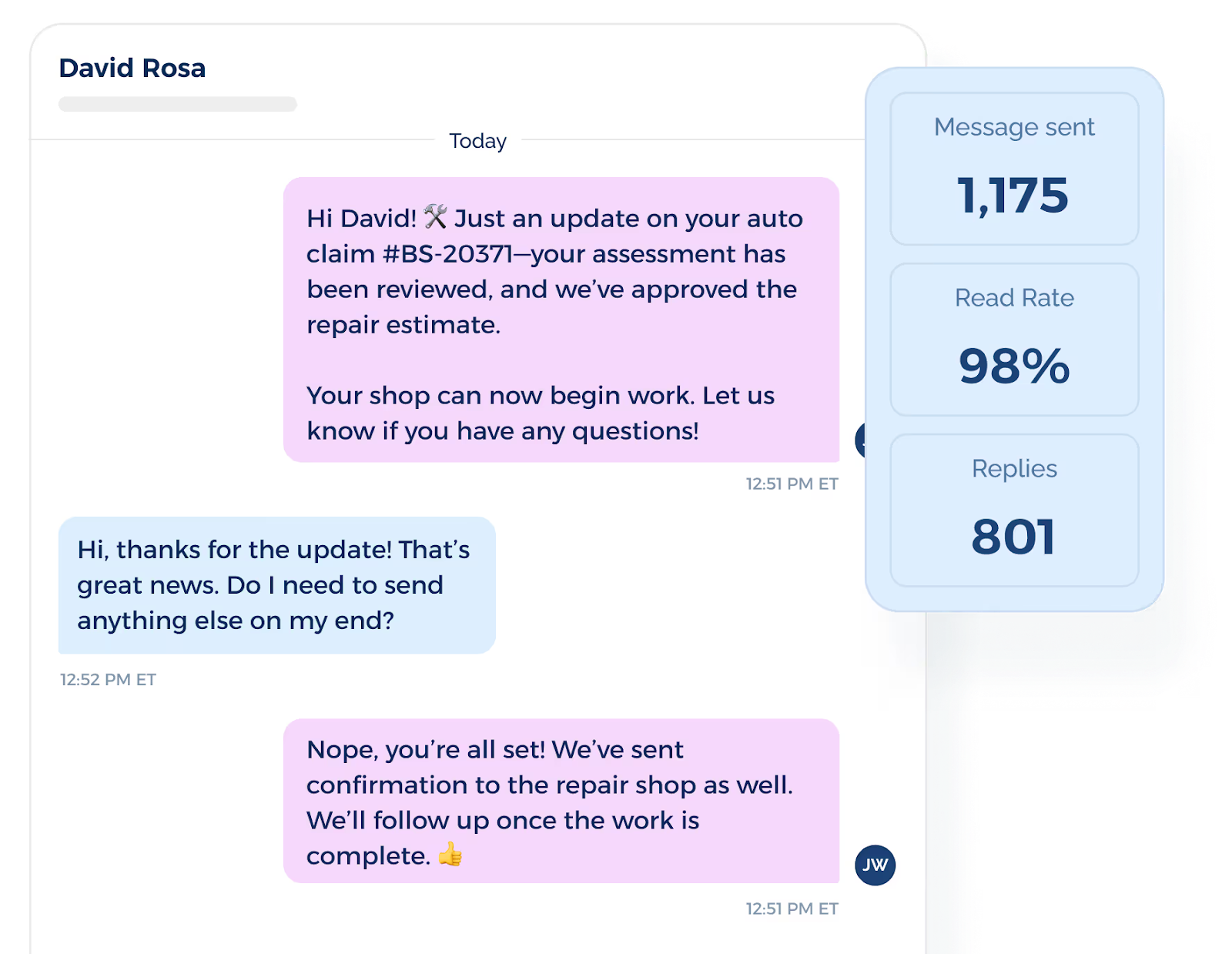
The open rate indicates how many people read your message, which is exceptionally high for SMS at an average of 98%. Together, these two figures demonstrate the first step of your communication success: reach and visibility.
ROI and Revenue Attribution
ROI (Return on Investment) measures how much you earned compared to what you spent on a campaign. This is where data becomes your advantage.
You can see which texts led to purchases and which ones didn’t. When combined with revenue attribution, these insights show which audiences or stages in your sales funnel are generating the most value.
Cost-Per-Conversion Tracking
This calculates how much it costs to get one customer to take your desired action. It combines spend, conversions, and total output into a simple financial view.
For example, if you spent $500 and gained 50 conversions, your cost per conversion is $10. Watching over multiple campaigns helps you boost profits, spot errors, and adjust your spending for better performance report results.
How to Launch Performance-Driven SMS Campaigns
A successful SMS campaign starts with a plan. Therefore, you need to build a repeatable system that brings consistent returns.
Step 1: Define Your Objectives
Start by identifying your primary purpose. Each objective requires a different type of SMS message and marketing strategy.
A sales message, for example, will rely on urgency and strong calls to action, while a retention campaign will emphasize personal connection and customer loyalty.
Once you have your goal, you can translate it into results-driven messaging. Instead of vague aims like “increase engagement,” set targets such as “achieve a 20% response rate” or “convert 10% of new contacts into paying customers.”
These benchmarks allow you to track SMS campaign performance and make informed adjustments as results come in. You can add a short note or description for each goal, and use a date range for future comparison.
Step 2: Build a Quality SMS List
A strategic campaign is only as strong as the audience it reaches. A high-quality SMS marketing list isn’t about collecting as many numbers as possible.
The goal is to communicate with people who have shown genuine interest in your brand and are likely to engage.
Start by using SMS opt-in methods that let customers willingly subscribe. This can be done through website sign-up forms, checkout pages, event registrations, or keyword QR codes that link to your texts.
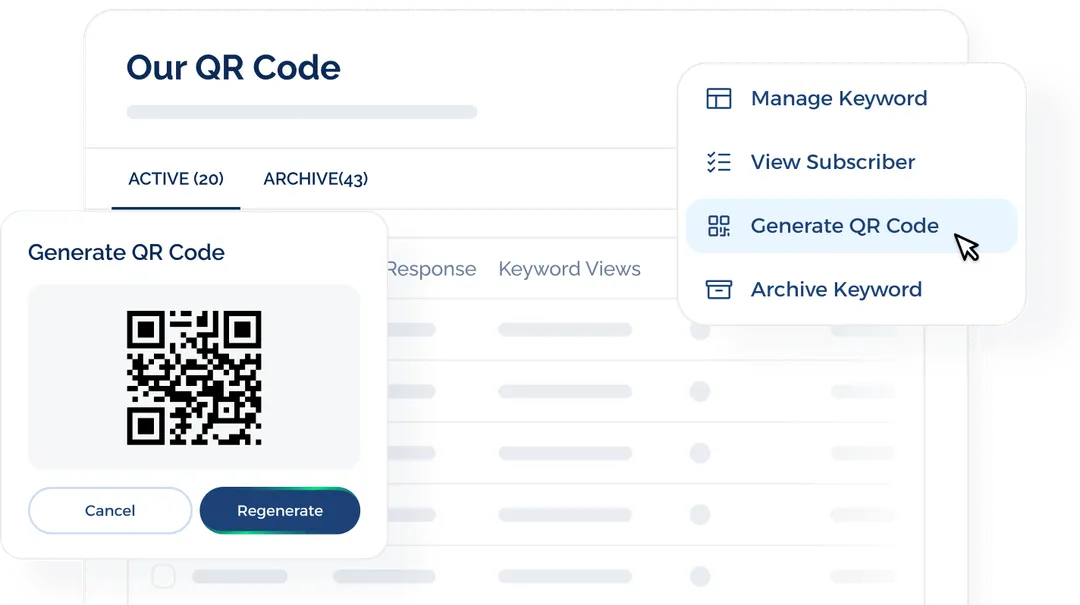
Avoid purchasing contact lists or scraping numbers from online sources. These shortcuts harm your deliverability, lead to complaints, and reduce your campaign performance.
Instead, attract subscribers by offering something valuable, such as early access to promotions, exclusive discounts, or VIP updates. This approach builds a list of engaged, motivated contacts who want to hear from you.
Step 3: Segment Audience for Better Targeting
SMS segmentation transforms a general subscriber list into a precision tool for performance. You can divide your contacts into smaller groups based on shared characteristics, such as behavior, location, or purchase history.
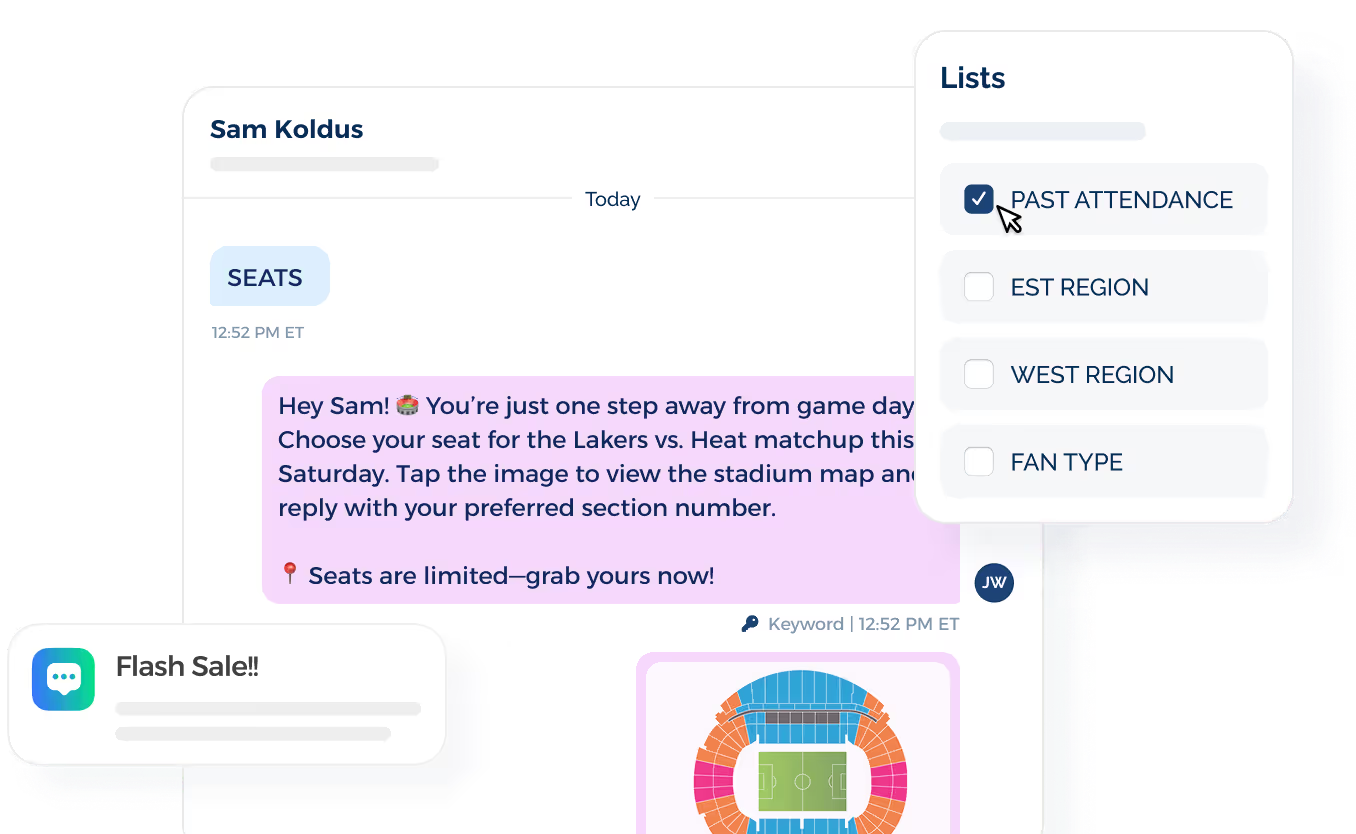
You need to look at how people interact with your SMS text messages, what products they buy, and how often they respond.
Repeat customers can receive exclusive loyalty offers, while new subscribers might get introductory promotions or onboarding tips.
Step 4: Automate Your Campaigns
Manual texting might work for small audiences, but optimal performance comes from SMS automation. When your marketing campaigns run automatically, you maintain consistent communication with every contact.
You can set up workflows that respond to customer actions. When someone joins your list, a welcome message can be sent instantly. If a contact abandons a cart, an automated reminder can go out within minutes.
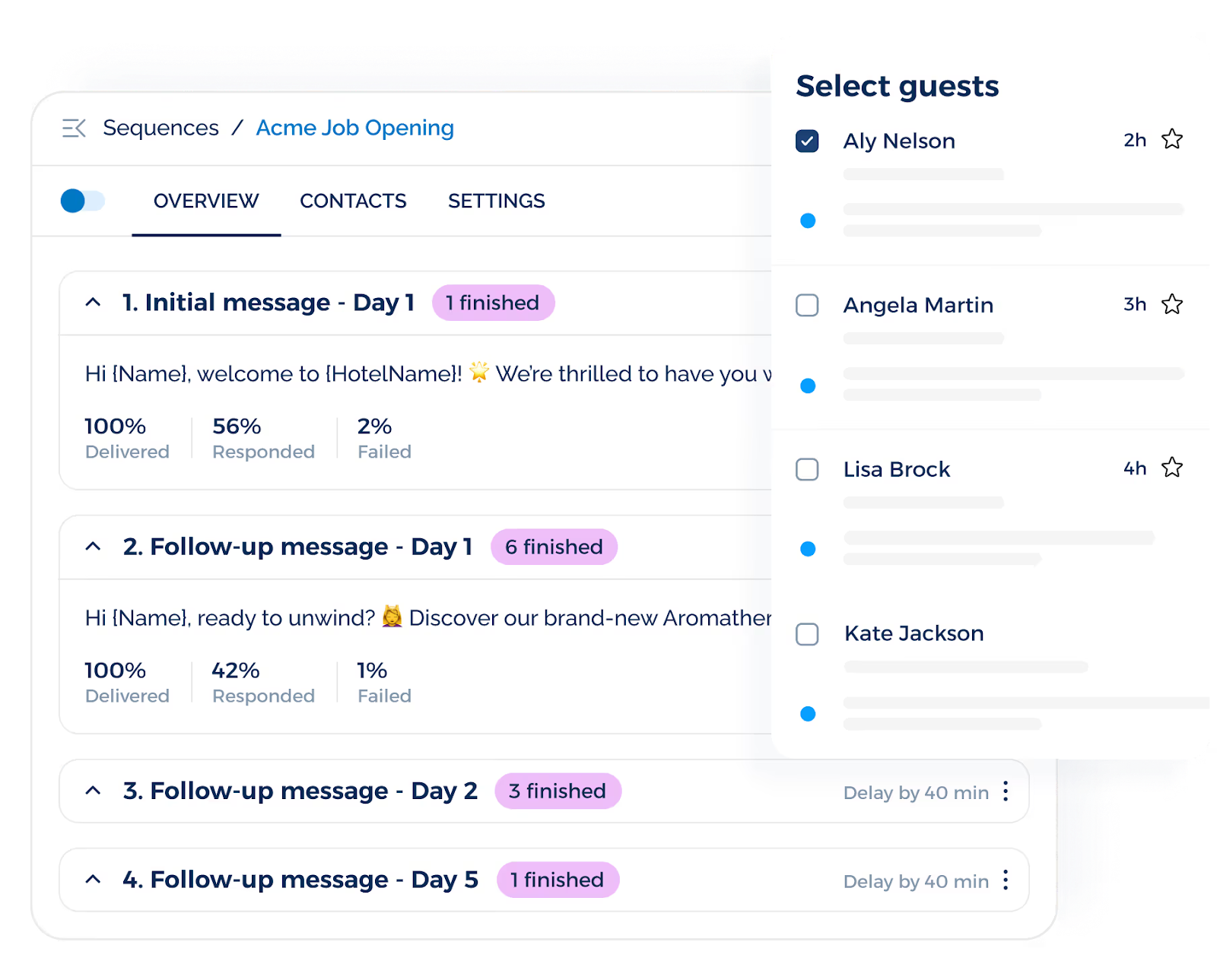
An SMS marketing platform like TextUs lets you design these triggers with precision, connecting each event to a specific automated message or drip campaign. This approach keeps your brand active in real time, turning potential opportunities into actual conversions.
Step 5: Monitor Results and Optimize
What determines long-term success is how consistently you track, evaluate, and improve your performance.
If your texts are being delivered but few are getting responses, the issue might be SMS timing, tone, or the strength of your offer. You should know the best time to send SMS campaigns according to your industry.
Tone and offer strength also play a role, but sending messages when your audience is most active often leads to higher engagement.
Optimization is where business growth happens. You can use A/B testing to compare variations of your campaigns, such as different message lengths, call-to-action styles, or send times.
Scale Your Messaging and Watch Conversions Rise—Grow Faster with TextUs!
With TextUs, you can turn simple text communication into measurable business growth. It's a platform built to track performance, convert leads, and keep your conversations moving toward results.
TextUs gives you full visibility into your campaigns. You can see delivery rates, response times, and click-throughs in real time, which are all the key metrics you need to make decisions backed by data.
Every message you send becomes part of a system that drives conversions and increases overall engagement.
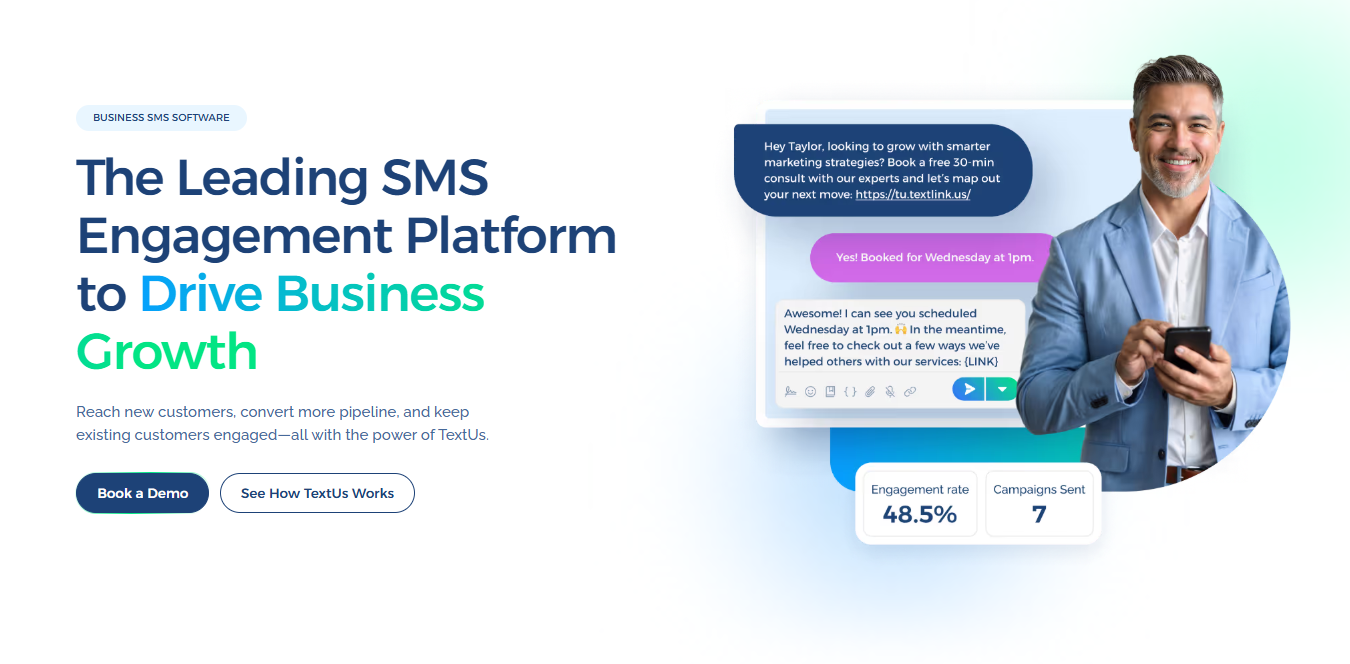
If you’re ready to treat SMS like the performance channel it is, start texting smarter today. Book a demo with TextUs and turn everyday conversations into opportunities!
FAQs About What Is Performance SMS
What is the difference between a text message and an SMS?
A text message is a general term for any short written message sent between mobile phones. On the other hand, SMS (Short Message Service) is the specific technical standard used by most mobile networks for sending text-only messages between phones.
How do I get started with performance SMS?
Start by picking a trusted SMS platform that gives you full visibility into your campaigns. From the very beginning, set clear goals and decide what success looks like. Then create your first campaign, track your key metrics, and review your performance report regularly.
You can use your platform’s quick view dashboard to check results in real time and keep your progress on display for easy tracking. Each report helps you understand your campaign’s overall performance and what can be improved next time.
Following this consistent methodology helps fine-tune your approach, stay within compliance standards, and continue to deliver value to your audience through text.
Can performance SMS work with email marketing or other channels?
Absolutely. Many businesses combine performance SMS with email marketing and other means of communication to reach customers across multiple platforms.
When synced properly, you can match timing and tone between emails and texts to boost engagement and maintain a consistent brand experience.
Continue Reading
Frequently Asked Questions
Business Texting
Built for Results
Create and convert pipeline at scale through industry leading SMS software




